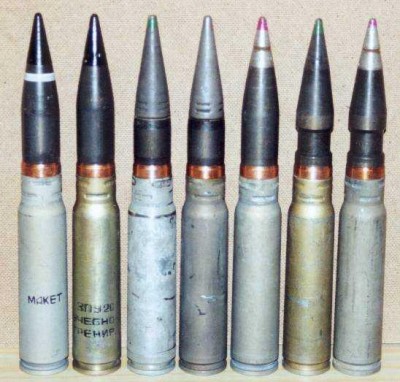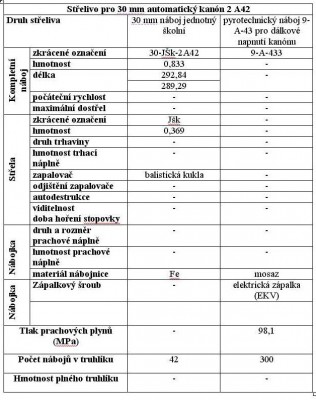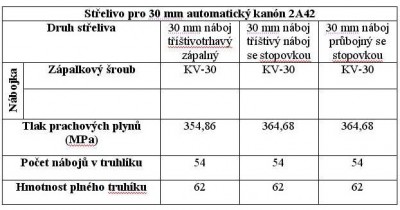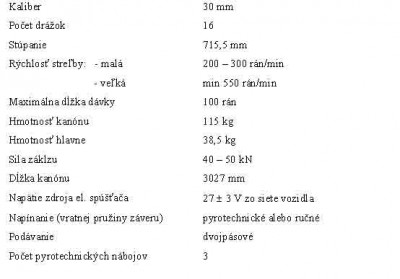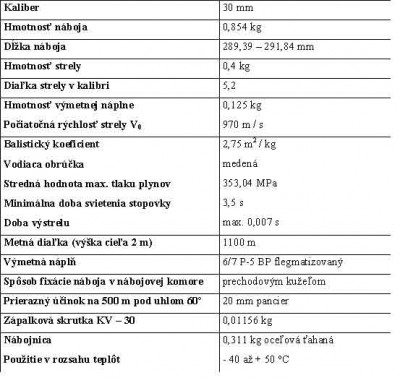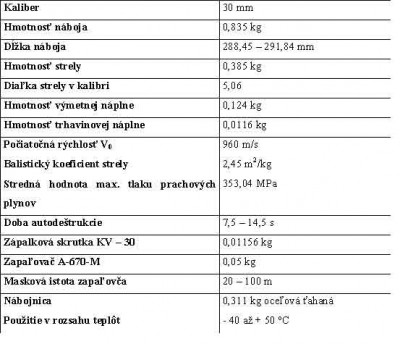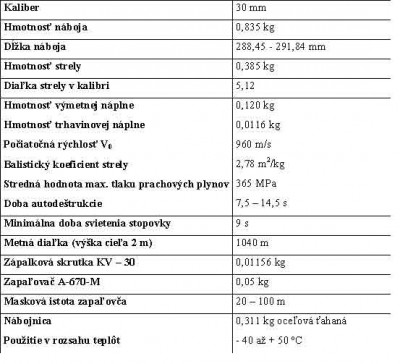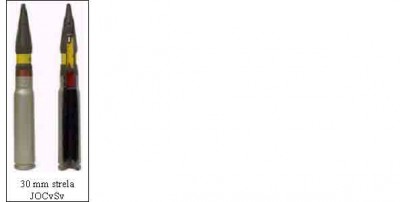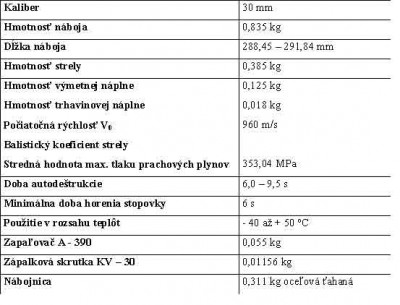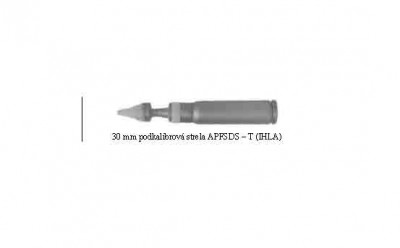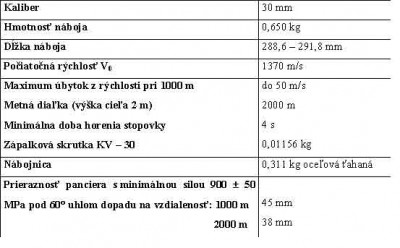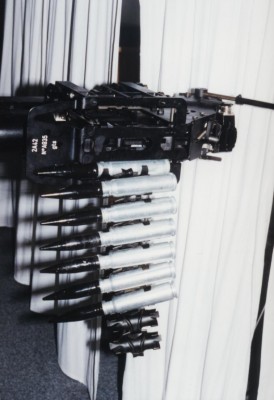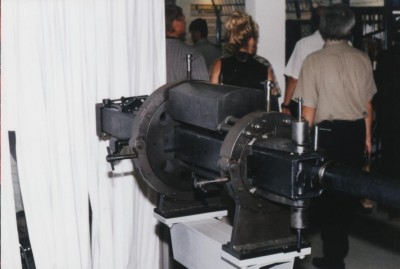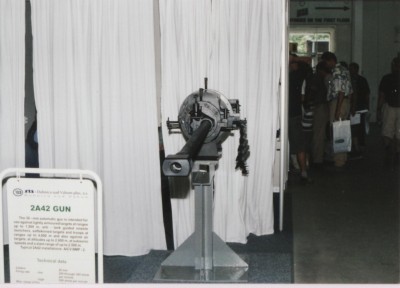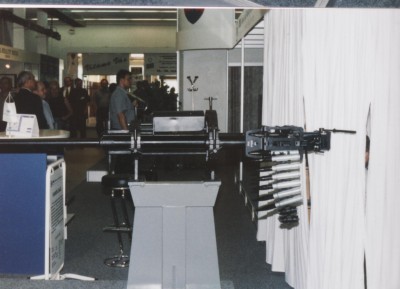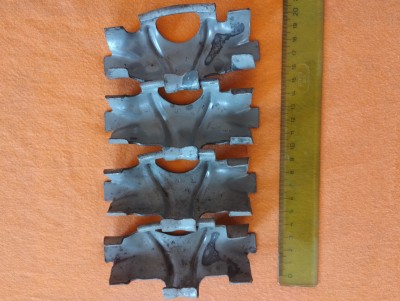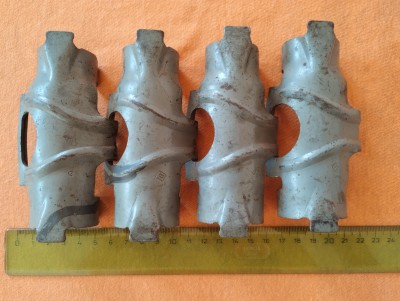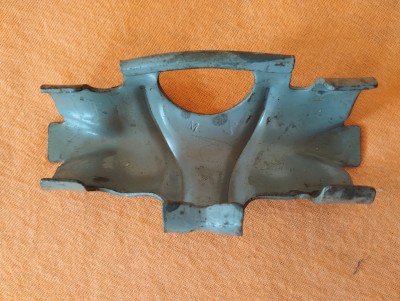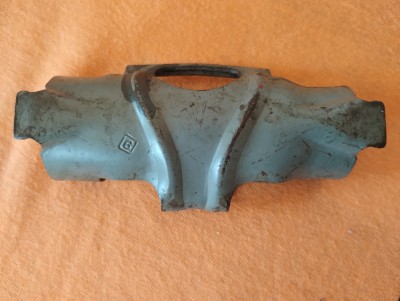30 mm automatic cannon 2A42
The gun is used on the Mil Mi-28, Kamov Ka-50, Kamov Ka-52 and Kamov Ka-29 helicopters.
Weapon characteristics
The 30 mm 2A42 automatic cannon is designed to destroy lightly armoured targets up to 1500 m away, PTRS sets, armoured vehicles and enemy live forces up to 4000 m away, and aerial targets flying at low altitudes. It uses a 30x165 mm cartridge.
Tactical and technical data
Calibre ...30
Initial projectile velocity ...960 m/s
Maximum altitude range ...2500 m
Maximum long range ...10 300 m
Effective range on aerial targets ...2500 m
Effective range on ground targets ...4000 m
Number of grooves in the barrel ...16
Groove pitch ...715.5 mm
Square range :
- Manual ... - 5 - + 75 deg.
- Semi-automatic ... - 4 - + 75 deg.
- automatically ... -4 - + 35 deg.
Measurement range ...360 deg.
Cannon length ...3027 mm
Cannon weight ...115 kg
Barrel weight ...38,5 kg
Rate of fire :
- low velocity ...200 - 300 shots/min
- high velocity ...550 rounds/min
Armour penetration at angle of incidence
60 degrees and a distance of 1000 m ...18 - 20 mm
Slip force ...40 - 50 kN
Belt feed ...two-belt
Tensioning ...pyrotechnic/manual
Operation ...1
The gun is used on the Mil Mi-28, Kamov Ka-50, Kamov Ka-52 and Kamov Ka-29 helicopters.
Weapon characteristics
The 30 mm 2A42 automatic cannon is designed to destroy lightly armoured targets up to 1500 m away, PTRS sets, armoured vehicles and enemy live forces up to 4000 m away, and aerial targets flying at low altitudes. It uses a 30x165 mm cartridge.
Tactical and technical data
Calibre ...30
Initial projectile velocity ...960 m/s
Maximum altitude range ...2500 m
Maximum long range ...10 300 m
Effective range on aerial targets ...2500 m
Effective range on ground targets ...4000 m
Number of grooves in the barrel ...16
Groove pitch ...715.5 mm
Square range :
- Manual ... - 5 - + 75 deg.
- Semi-automatic ... - 4 - + 75 deg.
- automatically ... -4 - + 35 deg.
Measurement range ...360 deg.
Cannon length ...3027 mm
Cannon weight ...115 kg
Barrel weight ...38,5 kg
Rate of fire :
- low velocity ...200 - 300 shots/min
- high velocity ...550 rounds/min
Armour penetration at angle of incidence
60 degrees and a distance of 1000 m ...18 - 20 mm
Slip force ...40 - 50 kN
Belt feed ...two-belt
Tensioning ...pyrotechnic/manual
Operation ...1
